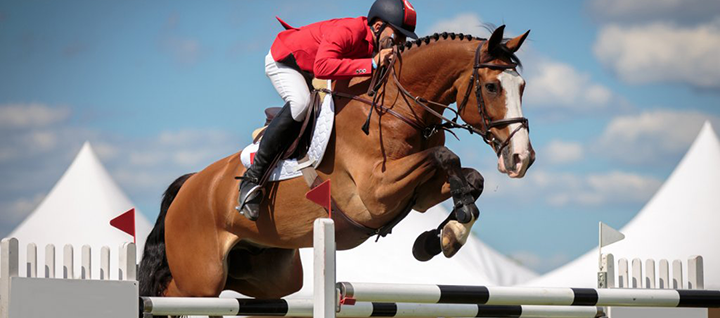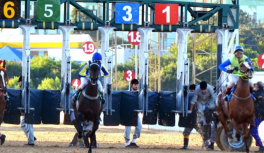
It is the Olympic discipline that attracts the largest number of spectators, thanks to how practical it is to watch, as well as the beauty and colorful design of the obstacles. Competitions take place on grass or sand arenas and stand out for their strict organization: scheduled times, the starting order of horse-and-rider pairs, the silence of the audience during each round, the perfect harmony between horse and rider, the award ceremony, and finally the victory gallop, when the winners circle the arena at a collected canter to music specially chosen for the occasion.
Equestrianism was a fundamental sport in the games of Ancient Greece and also in the Middle Ages, when riding skills experienced great development. Its origins are linked to fox hunting, when riders chased their prey while jumping over fences, rivers, and logs.
In show jumping, the progressive movement with which the horse suddenly lifts off the ground, projecting itself upward and forward (or outward in breadth), is remarkable. It can be performed at the walk, trot, canter, or even from a standstill. It is magnificent to behold.
The goal of a show jumping competition is to complete a course without penalties. Faults are converted into penalty points and include:
- Knocking down an obstacle or part of it (fall of rails).
- Refusal or disobedience by the horse (stopping).
- Fall of the rider or the horse.
- Error in the course.
- Exceeding the time allowed for the round.
Types of obstacles:
a) Verticals (photo 1) – can include rails, walls, gates, or planks.
Because they have no depth, the horse only needs to make an upward effort to clear them.
b) Spreads (width obstacles) (photo 2) – more difficult than verticals, since they require a double effort: both in height and in breadth.
c) Water jump (photo 3) – a width obstacle formed by a water-filled ditch with a 50 cm barrier on the take-off side to focus the horse’s attention. The maximum width must not exceed 4.50 meters.
d) Combinations (photo 4) – composed of two, three, or more elements, requiring successive efforts. These are made up of verticals, with distances that may not be shorter than 7 meters nor longer than 12 meters.
The course to be covered by each horse-and-rider pair must be ridden at a minimum speed of 350 meters per minute.
Article written by Deolir Dall’Onder for Revista Acontece Sul, Year XIV, No. 148.


